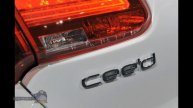Current, Voltage/Electromotive Force, and Resistance | MCAT Physics Prep
Need help preparing for the MCAT physics section? MedSchoolCoach expert, Ken Tao, will teach you what you need to know about current, voltage/electromotive force, and resistance within circuits. Watch this video to learn how to do well on the physics section of the MCAT exam!
Current (I) can be defined as the net flow of electrical charge. Current is most often transmitted by wires made of metal, and metal atoms have their electrons described by a model known as the electron sea model. In the electron sea model, electrons move freely between nearby neighboring metal atoms, and are extremely mobile. Under normal conditions, there is no net movement of electrons in a metal lattice, and thus no current. However, if there was a source of positive charge on one side of the metal lattice, negatively charged electrons would naturally move in that direction. The flow of electrons in a particular direction would be creating a current.
We said that current is the net flow of electrical charge. However, more specifically, current is defined as the direction of flow of positive charges. If the electrons in a metal wire are moving to the right, current is defined as moving to the left.
Current is calculated using the equation below, where ΔQ represents a change in charge and ΔT represents a change in time. Therefore, current is a change in the charge at some point over a period of time, with units of coulombs per second (C/s), or amperes (A).
Voltage/Electromotive Force
Previously, we noted that charges spontaneously move in the direction of electric potential (Φ) which will produce a decrease in electric potential energy (ΔPE is less than 0). Specifically, electrons, having a negative charge, will move spontaneously towards higher electric potential. Therefore, current exists when one side of a metal wire is at a higher potential than the other side, initiating the spontaneous movement of electrons. The differences in electric potential (ΔΦ) are supplied by a battery that has some voltage (V). For example, a galvanic cell is a battery that could spontaneously supply a voltage to a circuit, initiating the flow of electrons through the circuit. On a circuit diagram, a battery is indicated by two parallel lines - one longer, one shorter. The longer line is always the positive side at a higher potential, and the smaller line is always the negative side at a lower potential. Electrons are therefore induced to move from the negative side toward the positive side.
Resistance
Resistance (R) is a measure of current repulsion, with units of ohms (Ω). Circuit elements that supply resistance are called resistors. On a circuit diagram, a resistor is drawn with a zig-zagged line. The equation for resistance is shown below, where L is the length of the resistor, A is the cross sectional area of the resistor, and ρ stands for resistivity. Resistivity is an intrinsic property of a material. A conductive metal will likely have low resistivity, whereas a resistant non-metal will likely have high resistivity.
The longer a resistor, the longer the path the electrons have to travel, increasing resistance. The bigger the cross sectional area of a resistor, the more spacious the path electrons will have to travel through the wire, decreasing resistance.
Ohm’s Law
Ohm's law says that if you have current passing through a resistor, the current is going to be directly proportional to the voltage. This relationship is described by the equation below. Another interpretation of this equation is that if current passes through a resistor, the voltage in the circuit will drop across that resistor.
Terminal Voltage
Terminal voltage (Vterminal) is the literal output of voltage we can measure as coming from a battery and being supplied to a circuit. It’s not the same as the voltage of a battery, because batteries themselves have an internal resistance that causes a slight voltage drop that takes away from the voltage of the battery. As a side note, the term “electromotive force” will crop up on the MCAT, and it refers to the voltage of the battery (Vbattery).
MEDSCHOOLCOACH
To watch more MCAT video tutorials like this and have access to study scheduling, progress tracking, flashcard and question bank, download MCAT Prep by MedSchoolCoach
IOS Link: https://play.google.com/store/apps/details?id=com.htd.medschoolcoach&hl=en_US
Apple Link: https://apps.apple.com/us/app/mcat-prep-by-medschoolcoach/id1503000883
#medschoolcoach #MCATprep #MCATstudytools
Видео Current, Voltage/Electromotive Force, and Resistance | MCAT Physics Prep автора Мощные автомобили и их владельцы
Видео Current, Voltage/Electromotive Force, and Resistance | MCAT Physics Prep автора Мощные автомобили и их владельцы
Информация
25 января 2024 г. 10:16:07
00:10:10
Похожие видео
 АНГЛИЙСКИЙ ЯЗЫК ДЛЯ ДЕТЕЙ | Lesson 11 (A) What is it - Cartoon Story
АНГЛИЙСКИЙ ЯЗЫК ДЛЯ ДЕТЕЙ | Lesson 11 (A) What is it - Cartoon Story 2015 Kia cee’d GT
2015 Kia cee’d GT АНГЛИЙСКИЙ ЯЗЫК ДЛЯ ДЕТЕЙ | Lesson 8 (A) Come here, Mary. - Cartoon Story
АНГЛИЙСКИЙ ЯЗЫК ДЛЯ ДЕТЕЙ | Lesson 8 (A) Come here, Mary. - Cartoon Story what do you like reading
what do you like reading 2011 KIA SPORTAGE R 4WD
2011 KIA SPORTAGE R 4WD С КЕМ ОСТАНЕТСЯ РЕБЕНОК?
С КЕМ ОСТАНЕТСЯ РЕБЕНОК? Kia | Ceed | 1.0T GDi ISG GT-Line S 5dr | White | PE18 CFD
Kia | Ceed | 1.0T GDi ISG GT-Line S 5dr | White | PE18 CFD ddd
ddd Отображение подачи мм/мин об/мин.
Отображение подачи мм/мин об/мин. Testimonio al retirar su Kia Sportage 2012 !
Testimonio al retirar su Kia Sportage 2012 ! Kia Picanto 1.0 2 Euro 5 5dr
Kia Picanto 1.0 2 Euro 5 5dr Интерьер может рисовать каждый 👌
Интерьер может рисовать каждый 👌 Презентация 13 администрирование
Презентация 13 администрирование kia Forte 2011 4 cilindros cambio de polea de banda sonando
kia Forte 2011 4 cilindros cambio de polea de banda sonando #Бипэк цены Астана авторынок сегодня 2021 Нур Султан Astana Nur Sultan bipek
#Бипэк цены Астана авторынок сегодня 2021 Нур Султан Astana Nur Sultan bipek 50 странных уроков по физике (но ты всё поймёшь) #25 Постоянный электрический ток и закон Ома.
50 странных уроков по физике (но ты всё поймёшь) #25 Постоянный электрический ток и закон Ома. 2014 Kia Optima SXL Turbo (Start Up, In Depth Tour, and Review)
2014 Kia Optima SXL Turbo (Start Up, In Depth Tour, and Review) АНГЛИЙСКИЙ ЯЗЫК ДЛЯ ДЕТЕЙ | Lesson 11 (B) What is it - Cartoon Story
АНГЛИЙСКИЙ ЯЗЫК ДЛЯ ДЕТЕЙ | Lesson 11 (B) What is it - Cartoon Story Подача на зуб
Подача на зуб Kia Ceed/ProCeed: Dynamische LED Ambientebeleuchtung mit 64 Farben nachrüsten (Innenbeleuchtung)
Kia Ceed/ProCeed: Dynamische LED Ambientebeleuchtung mit 64 Farben nachrüsten (Innenbeleuchtung)
